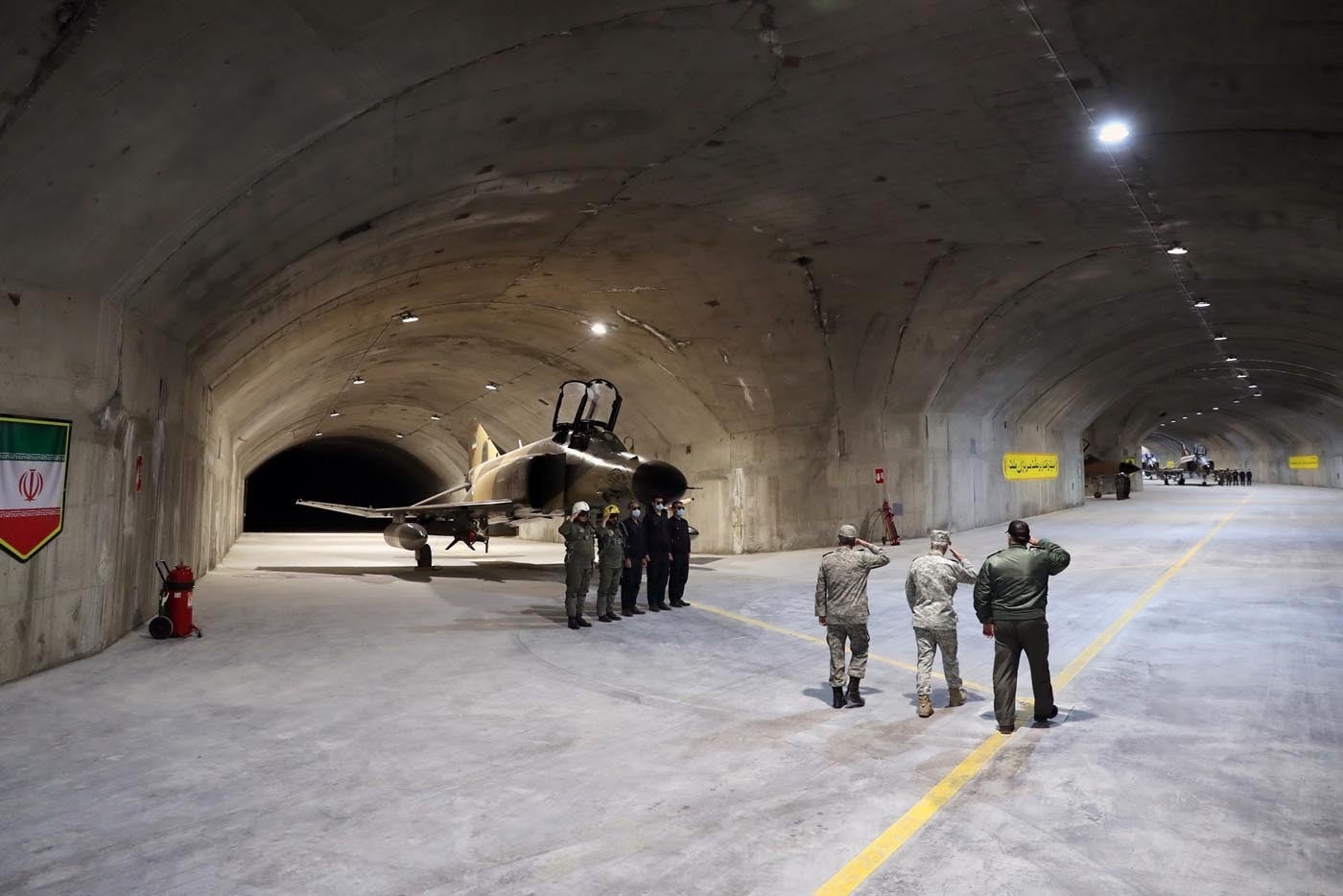
The Islamic Republic of Iran Air Force (IRIAF) showcased their new underground airbase, the “Oqab 44” (Eagle 44), in an unveiling ceremony on 7 February.
The unveiling ceremony was attended by the Chief of Staff of the Armed Forces Major General Mohammad Bagheri, Army Commander Major General Abrolrahim Mousavi, and a number of other senior Iranian commanders.
The Eagle 44 base is said to be capable of accepting and operating various types of fighter jets and bombers as well as unmanned aerial vehicles (UAVs) the Islamic Republic News Agency (IRNA), a state source, reports.
This underground network system, which is said to have been constructed beneath mountains, is equipped with various facilities. It is said to include alert and command posts, hangars, maintenance sites, navigation and airport facilities, fuel tanks and more.
The airbase is believed to be one of several underground air bases of its kind that have been constructed across the country in the past to meet the needs of the air force.
The IRNA also tells us that these airbase facilities, scattered around in undisclosed locations, are designed to facilitate surprise air operations from unexpected locations at unexpected times.
How well do you really know your competitors?
Access the most comprehensive Company Profiles on the market, powered by GlobalData. Save hours of research. Gain competitive edge.

Thank you!
Your download email will arrive shortly
Not ready to buy yet? Download a free sample
We are confident about the unique quality of our Company Profiles. However, we want you to make the most beneficial decision for your business, so we offer a free sample that you can download by submitting the below form
By GlobalDataThis display of Iran’s air force capability follows the country’s deal with Russia to procure their Su-35 fighter jets by March 2023 as part of a military order that includes defence systems, missiles, and helicopters.
A show of force
For such a show of force the construction of the airbase appears to be a highly defensive measure. The placement of the airbase with its mountain cover seems to be designed to protect it from any aerial offensives from adversaries.
This makes sense as the unveiling of the Eagle 44 comes less than a fortnight after the largest ever US-Israeli military exercise in history, named “Juniper Oak”.
In this exercise, the US and Israeli forces conducted long-range strikes, suppression of enemy air defence, electronic attacks, offensive counter and air interdiction, and air operations in the maritime domain according to the Pentagon.
“Many of the missions exercised during Juniper Oak would be central to a major conflict involving Israel, Iran, and its proxies. This could lead Iranian decisionmakers to conclude that they might also be facing American forces in the event of such a conflict – their nightmare scenario” says the Washington Institute think tank.
According to GlobalData Defence analyst Tushar Mangure, “it seems that Iran is anticipating something similar to the Six-Day War in the near future. The airbase could also act as a strategic weapons storage facility and reduce their response time as both the warheads and the delivery platforms are stored at the same location”.
Iran’s response time
There is something to be said for the airbase as a diverse stockroom in pooling the IRIAF’s resources to facilitate a fast response to enemy attacks. This is necessary if the air force hopes to protect their soon to be inducted Su-35 fleet from surprise attacks.
The defensive feature of the airbase goes hand in hand with the offensive capabilities of their new fleet of Su-35s, Mangure states.
“Considering the obsolescence and limited strike capability of in-service aircrafts such as the F-4 Phantom II, F-5 Tiger II, F-14 Tomcat, Su-24, and MiG-29, the strike role would be assigned to the Su-35. The Su-35 has the combat range, advanced air-to-air and air-to-ground weapons, endurance, and payload capacity to strike long range targets, which are beyond the capability of Iran’s current fleet”.







